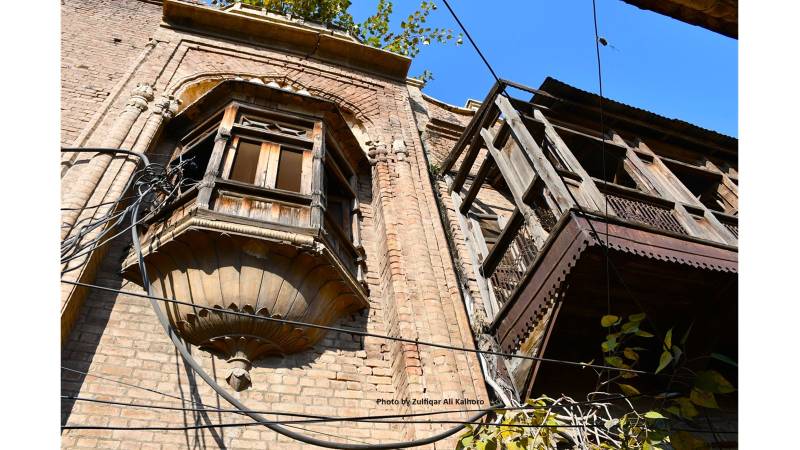
Daultala is a historical town in Rawalpindi’s Gujar Khan. It is noted for its imposing havelis, built before the Partition of 1947, and for the shrines of Sufi saints. The majority of the havelis belonged to Sikhs, who were the most influential and powerful community in Daultala town. Indeed, Gujral and Lamba were the two most influential families in Daultala town.
Maaris or havelis are found in almost every historical village and town in Pothohar. Some of the prominent havelis, built by the elites of the respective towns and villages in Rawalpindi’s Gujar Khan and Kallar Syden tehsils, include Khem Singh Bedi haveli in Kallar Syedan, Atam Singh Gujral and Jeevan Singh havelis in Daultana town, Maari (mansion) of two Sikh brothers Heera Singh and Lal Singh, the Maari of Munshi Gopal Singh alias Munshi Pala, Maari of Partab Singh, Mangal Singh and Budh Singh in Narali village, Bakhshi Moti Ram, haveli of Sardar Tara Singh, haveli of Bali Singh known as Lal haveli, Diwan Prithvi Chand, Tek Chand, haveli is known as Qasr-e-Amir in Gulyana village, haveli of Bakhshi Ram Singh (built in 1886) in Kauntrila village, the haveli of Ratan Singh in Sagri, and many others.
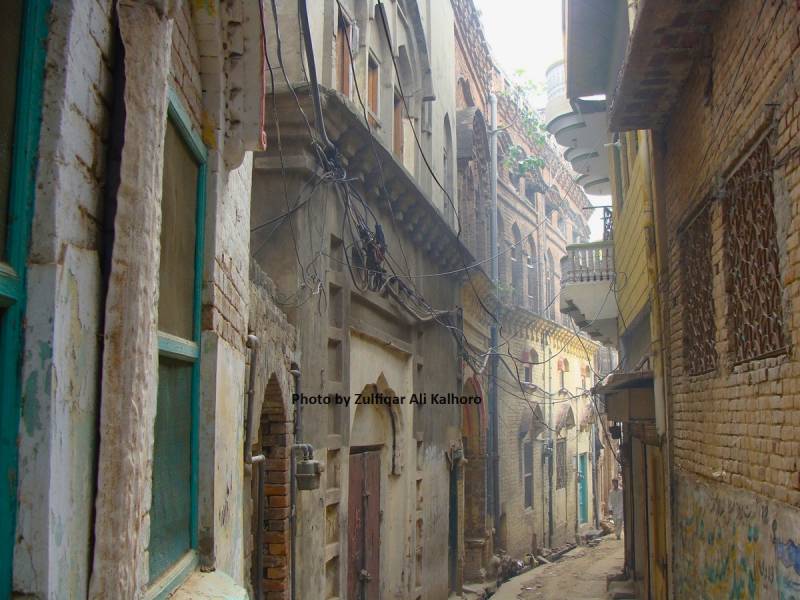
I have visited and written on several havelis in Attock’s Jand and Pindigheb tehsils which include the havelis in Nara, Thatta, Saghri, Domel, Makhad Sharif, Maira Sharif and other villages and towns. The most notable havelis belonged to Dera Mal Sethi, Hari Chand, Tarachand, Mahar Chand and Peshwari Lal, Durana Mal, Jairam and Kishan Chand, Khudyar Khan Khattar, Mai Gulabi in Nara village, and Haji Malik Jang Bahadur Khan, Malik Aamir Khan, Gian Chand, Karam Chand, Ganga Ram, Ram Rattan, Ganesh Das and others in Pidigheb town.
Both Chakwal and Jhelum’s landscapes are dotted with historical havelis. A few imposing havelis are located in Chakwal and Jhelum’s historical towns and villages, notably Chawli, Mangwal, Munday, Neela, Siral, Ranjha, Karriala, Bhalla, Bhaun, Domeli, Padhri, Bishandaur (Dewan-e-Huzoori), and many others.
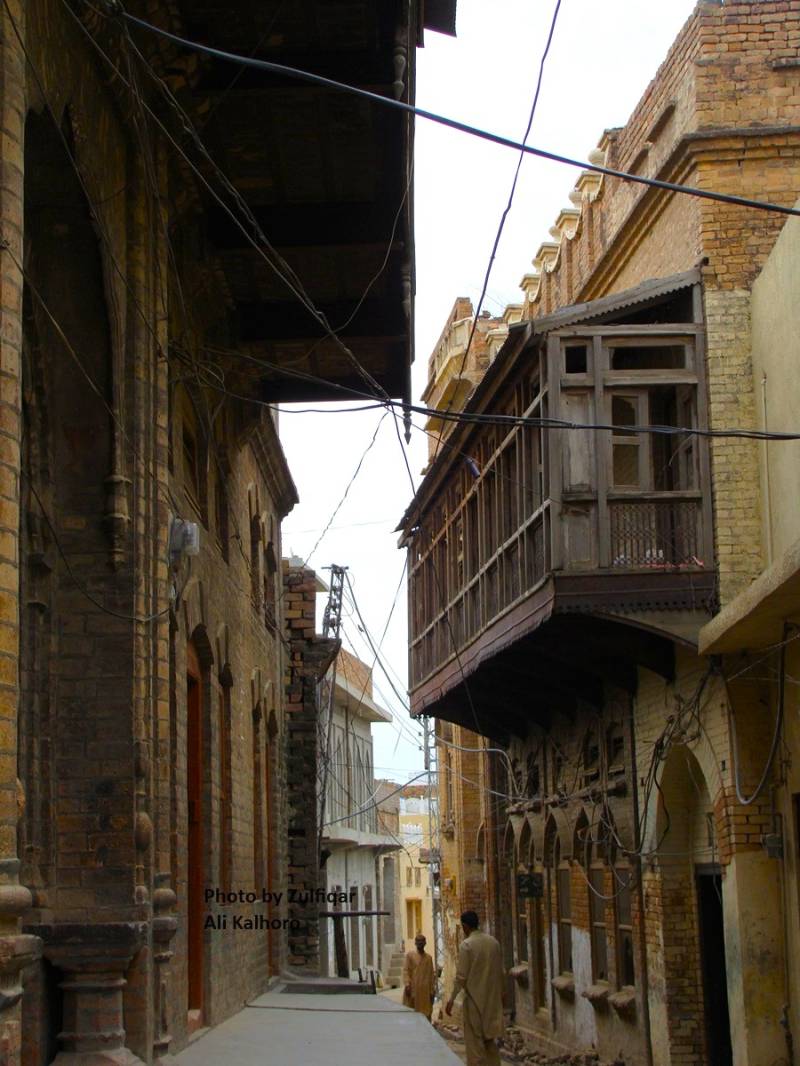
Rawalpindi city also has some of the most magnificent havelis in its old localities. These havelis reflect the aesthetic and opulence of the builders. Now, most havelis have been renovated and have lost their originality.
Daultala in Gujar Khan tehsil is a historical town noted for several havelis or Maaris. Some of the old Sikh havelis are located in Gurdwara Mohalla, Mohalla Chanan Railway Road, Mohalla Old Boarding House, Mohalla High School, Mohalla Motia Majid Chowk Bara Kanwan, Mohalla Gurdwara, Mohalla Chaudry Waris Khan and Mohalla Zargaran. The Mohalla Zargaran has the most imposing old havelis built before the partition of 1947 and belonged to Sikhs and Hindus. However, Sikhs were the majority in Daultala, controlling the local economy and politics of Daultala and neighbouring areas.
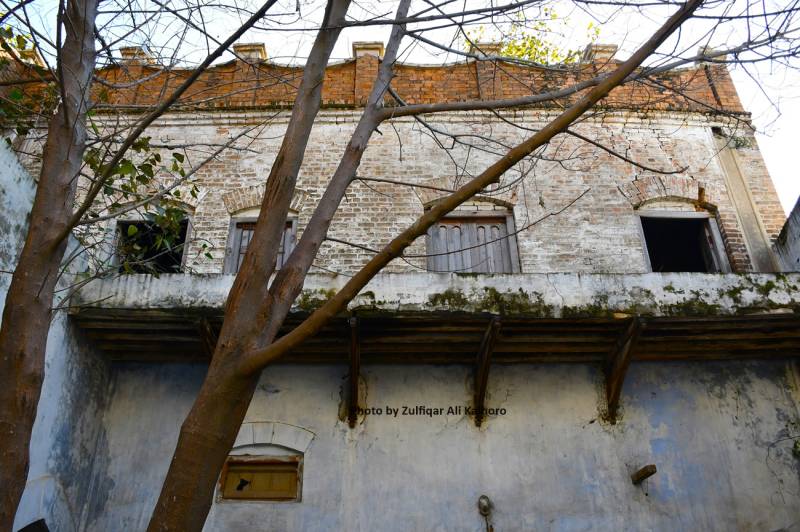
Now, most of the Maaris or havelis have been renovated, wreaking havoc with the originality of the structures. When I first visited this town in 2007, I saw a few imposing Maaris, which were noted for their portals and Jharokhas. After my revisits in 2009, 2010, 2011, 2013, 2016, 2017, 2019, 2020 and 2023, I saw a few buildings had lost their originality, including some imposing havelis belonging to Jeevan Singh and Atam Singh Gujral. In fact, Atam Singh Gural haveli was demolished and rebuilt in 2017.
Wooden carved doors are among the distinctive features of the Daultala havelis. One can see beautiful havelis in the town's old Mohalla Zargaran, which is discernible for being ornately carved, reflecting the builder's taste and aesthetic. The main portals of the haveli received more attention from the builders. Like the door, Jharokha, an important architectural element of the havelis in Daultala, also received special treatment by the masons and the owners, reflecting opulence and aesthetics.
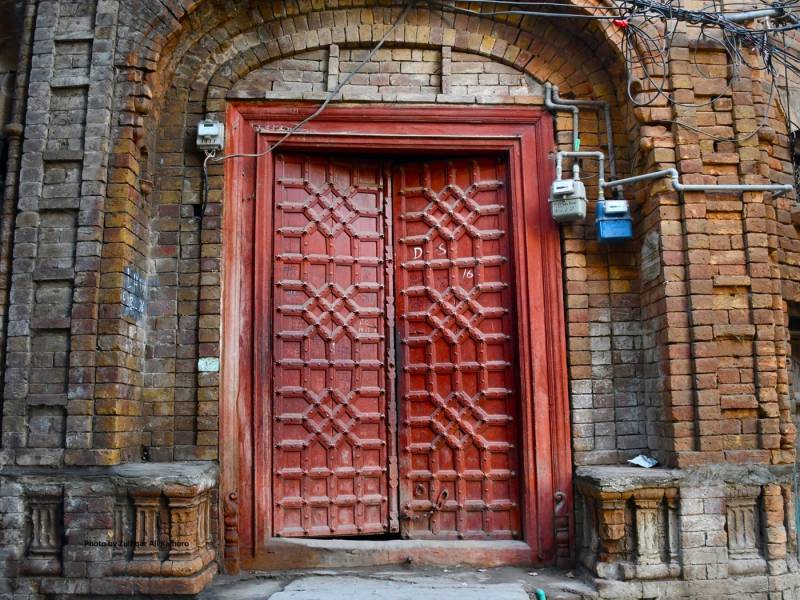
Jharokhas were generally used on the upper floors. In Pothohar's hot and cool weather, both males and females used Jharokhas. However, male family members always occupied the central Jharokha, while the women used the flanking Jharokhas. The number of windows and Jharokhas indicate the owner's affluence. Balconies were also a dominant element in Pothohar's haveli architecture. Special care was taken while making balconies.
In some havelis, towers generally on the upper floor played a dominating role in the haveli architecture of Pothohar. Such marvellous towers surmounting the havelis can still be seen in the haveli of Bakhshi Ram Singh in Kauntrila and many others. Generally, the upper floor of the havelis terminates in the square room of the tower, apparently constructed either to have a panoramic view of the town or village or to enjoy the cool breeze in the evening and at night. The beautiful square rooms on the top of the havelis were also seen in the Atam Singh Gujral haveli and Jeevan Singh haveli in Daultala, as well as many other Sikh and Hindu havelis in Narali village.
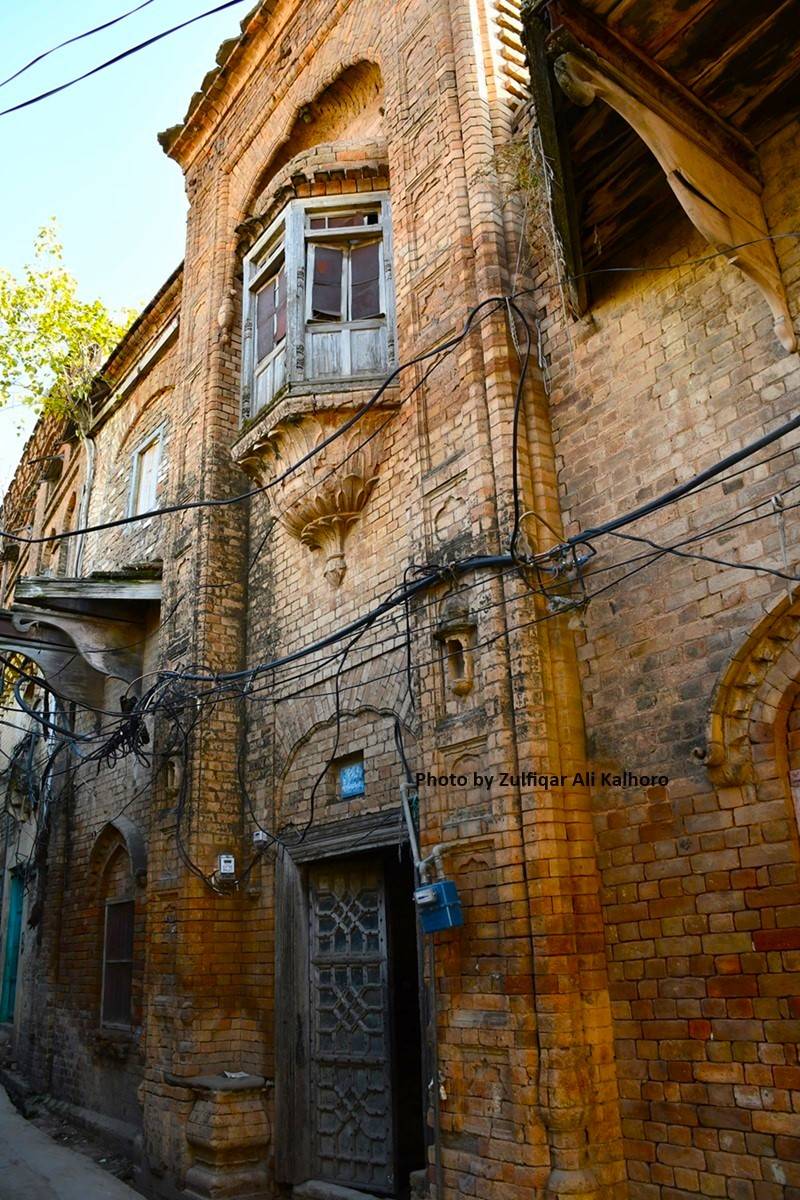
However, the haveli of Atam Singh Gujral in Daultala, which was demolished in 2017, was remarkable for its imposing wooden windows and Jharokhas. It is believed to have been built by Atam Singh Gujral in 1921, a notable of pre-partition Daultala. It was a three-storied haveli with several rooms. The facade of the haveli was decorated with Jharokhas and seven small and large windows. One of the windows just below the Jharoka was decorated with a miniature dome. Two similar windows flanked this window. The main entrance door of the haveli had some carving on it. From inside, the haveli had ornate wood carvings. There was an imposing wooden railing around the upper storey. One could have observed the chowk or main courtyard of the haveli from this wooden railing. The rows of seven rooms with beautiful arch entrances were to the right side of the courtyard. To the left side of the chowk was a wall with stairs leading to the upper floor. There was also a grill bracket on the wall beside the stairs. The top of the floor of the haveli acted as a viewing pavilion.
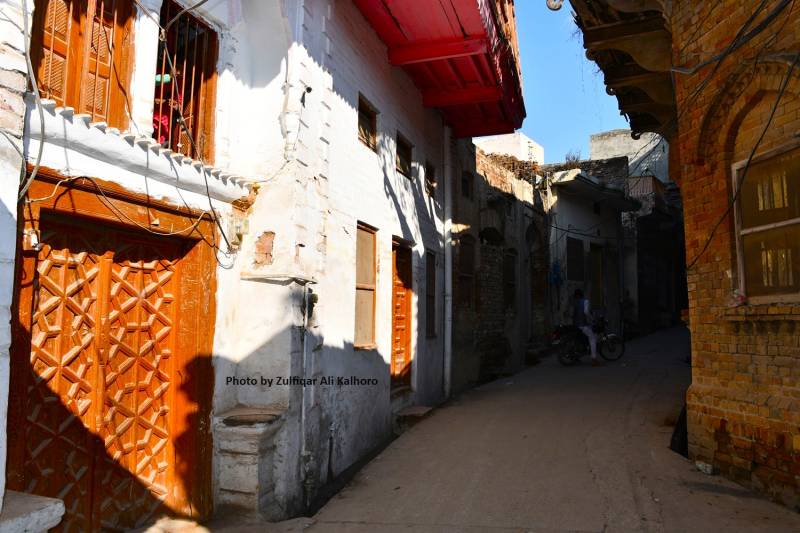
Apart from the haveli of Atam Singh Gujral, the haveli of Jeevan Singh, which is still extant, graces the landscape of Daultala town. The notable features of the haveli are the carved wooden door and jharokha that decorate the facade. A few other havelis are located on the same street in Daultala’s Mohalla Zargaran.
All these havelis are noted for beautiful balconies and Jharokhas.
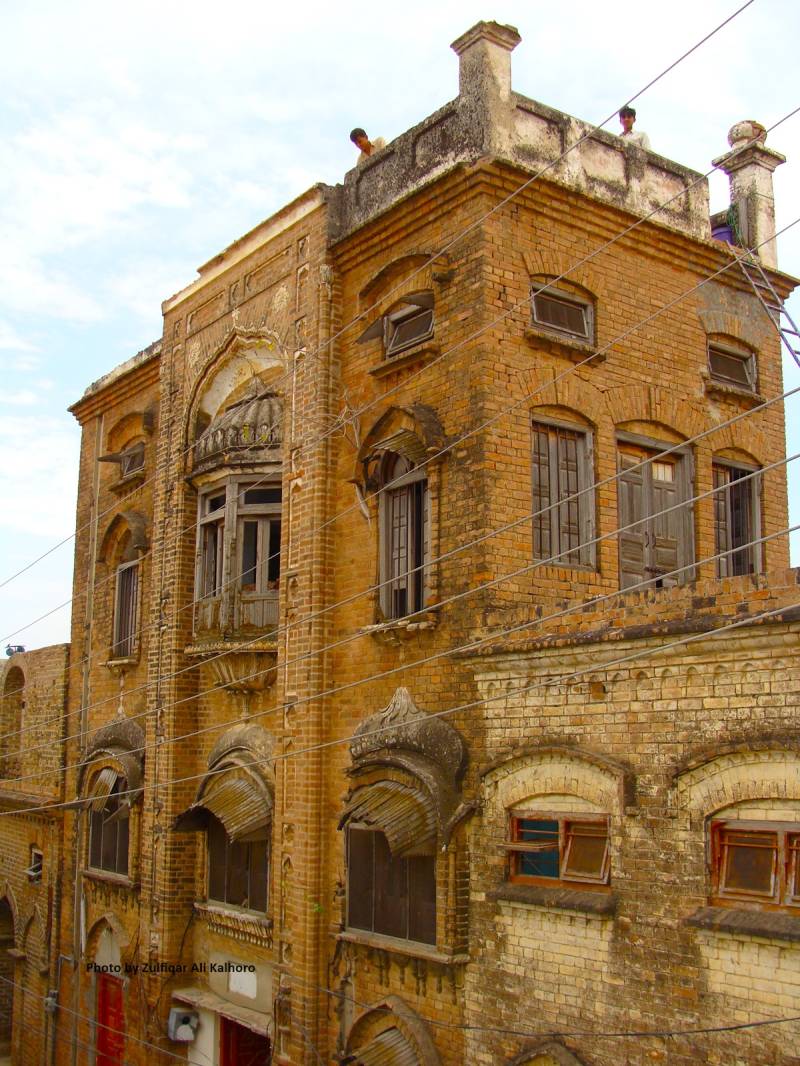
Apart from Jharokhas and balconies, the havelis' platforms and porticos also received special attention from the builders. The new owners of the havelis still use these platforms. Mostly, the family elders used to sit and watch the activities of the people in the street, where once several shops were also located.
The authorities concerned should preserve the remaining havelis of Daultala and declare a few streets in the town's old mohallas heritage streets. In this way, we may at least protect a few havelis or maaris (mansions) for posterity.

